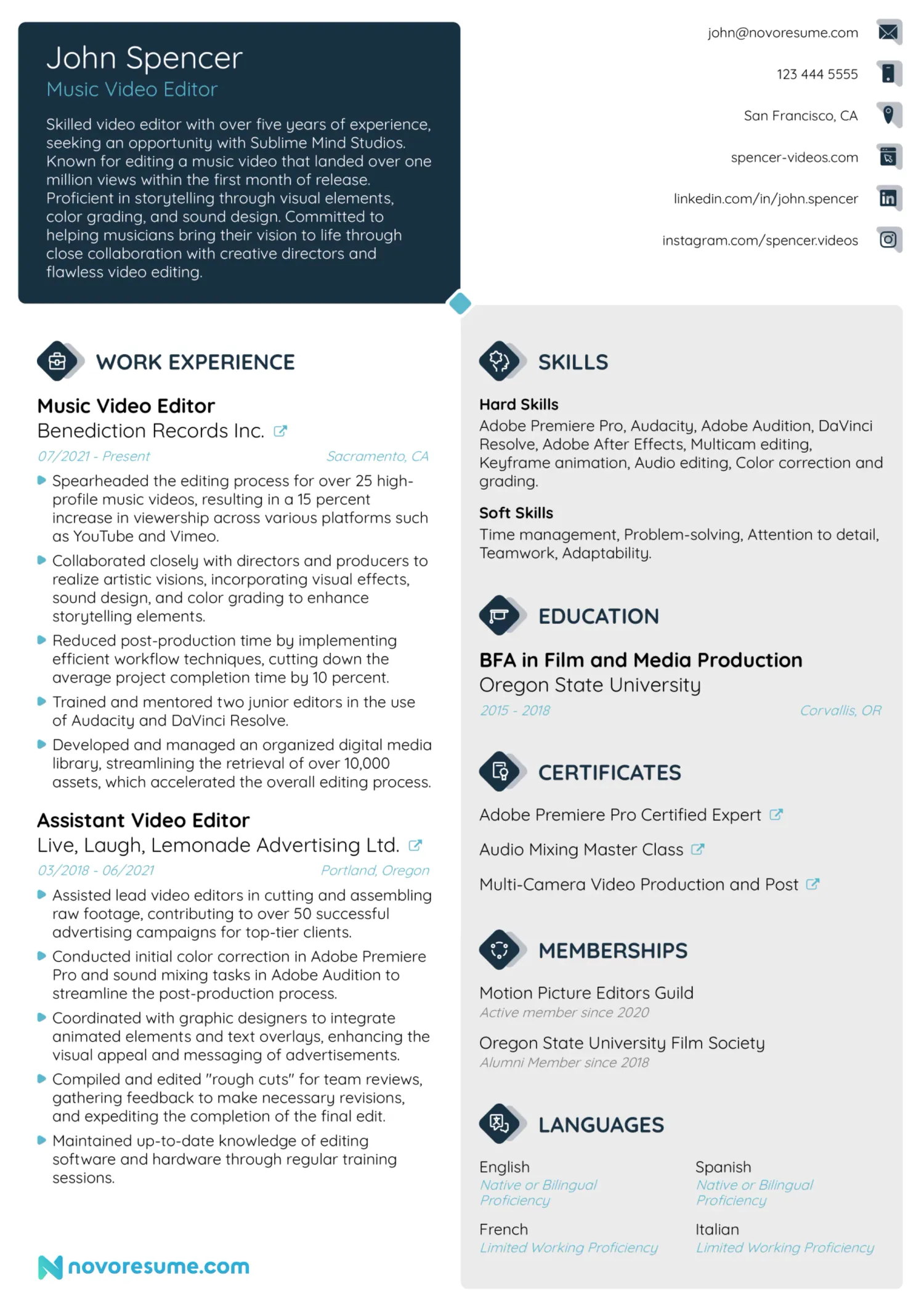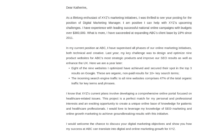Landing your dream job as a video editor isn’t just about showcasing your amazing reel; it also hinges on presenting a professional and compelling CV. Think of your CV as the trailer to your main feature film – it needs to grab attention, highlight your best work, and leave the viewer wanting more. For many aspiring and experienced video professionals, crafting this document from scratch can feel just as daunting as a complex edit.
That’s where a well-designed CV comes into play, providing a structured foundation that guides you in presenting your skills, experience, and unique creative vision effectively. It ensures you don’t miss crucial details while helping you stand out in a competitive field.
Crafting Your Story: Essential Sections for a Winning Video Editor CV
Building a CV that truly represents your talents as a video editor involves more than just listing past jobs. It’s about telling a compelling story that showcases your journey, your expertise, and your passion for visual storytelling. A strong structure is key to making this narrative clear and impactful for any hiring manager.
Start with your contact information, naturally, but quickly follow it with a powerful professional summary or objective statement. This isn’t just a generic intro; it’s your elevator pitch, a concise paragraph highlighting your key skills, years of experience, and what you bring to the table. Are you a master of Adobe Premiere Pro with a flair for motion graphics, or perhaps an expert in DaVinci Resolve with a knack for color grading and sound design? Make it clear here.
Next, dive into your experience section. This is where you detail your professional history, but don’t just list job titles and dates. Focus on specific projects, the challenges you overcame, and the measurable results you achieved. Instead of "Edited videos," try "Led post-production for a series of 10 promotional videos, increasing client engagement by 25 percent." Quantify your impact wherever possible, and always mention the software and techniques you utilized.

Your skills section is paramount for a video editor. Break it down into technical proficiency and soft skills. Technical skills are your bread and butter, but don’t just list them; categorize them for clarity. Soft skills, like communication, problem-solving, and adaptability, are equally important in a collaborative environment.
- Editing Software: Adobe Premiere Pro, After Effects, DaVinci Resolve, Avid Media Composer, Final Cut Pro, Lightworks
- Motion Graphics & VFX: Cinema 4D, Blender, Nuke, Fusion
- Audio Editing: Adobe Audition, Pro Tools
- Color Grading: Lumetri Color, DaVinci Resolve Color Page
- Operating Systems: Windows, macOS
- Soft Skills: Storytelling, Attention to Detail, Time Management, Collaboration, Client Communication, Problem-Solving, Creativity
Finally, ensure your education, certifications, and any awards are included. Crucially, provide a prominent link to your online portfolio or showreel. This is where your actual work shines and solidifies everything you’ve claimed on paper. Without it, even the best cv template for video editor falls short.
Making Your CV Pop: Tips for Standing Out in the Reel World
Once you’ve structured your content, it’s time to refine it and ensure it makes the best possible impression. Remember, recruiters often spend only a few seconds scanning a CV initially, so every element counts in capturing their attention.
Firstly, always tailor your CV to the specific job description. Generic CVs rarely impress. If a job emphasizes commercial editing, highlight your commercial projects. If it’s narrative filmmaking, emphasize your storytelling and dramatic editing experience. Use keywords from the job posting to ensure your application resonates with what they’re looking for, making it easier for applicant tracking systems to flag your CV.
Secondly, don’t be afraid to add a touch of visual appeal appropriate for your creative field. While a clean, readable layout is always paramount, subtle design elements or a well-chosen font can make your CV more engaging. Consider using a two-column layout or discreet color accents. However, prioritize clarity and professionalism over overly flashy designs that might distract from your content.
Proofread meticulously. A single typo or grammatical error can undermine your professionalism. Read your CV aloud, or better yet, have a fresh pair of eyes review it for mistakes. Consistency in formatting, spacing, and font choices across the entire document also speaks volumes about your attention to detail – a vital trait for any video editor.
Lastly, and perhaps most importantly, continuously update your CV. As you gain new skills, complete new projects, or learn new software, make sure your CV reflects these advancements. This proactive approach ensures that your document is always ready to impress, giving you an edge when new opportunities arise.
Crafting a compelling CV is a strategic step in navigating the competitive world of video editing. It’s an opportunity to articulate your professional journey and passion, showcasing not just what you’ve done, but what you’re capable of achieving for a prospective employer. By investing time in creating a clear, impactful, and tailored document, you significantly increase your chances of securing those coveted interviews and advancing your career.
